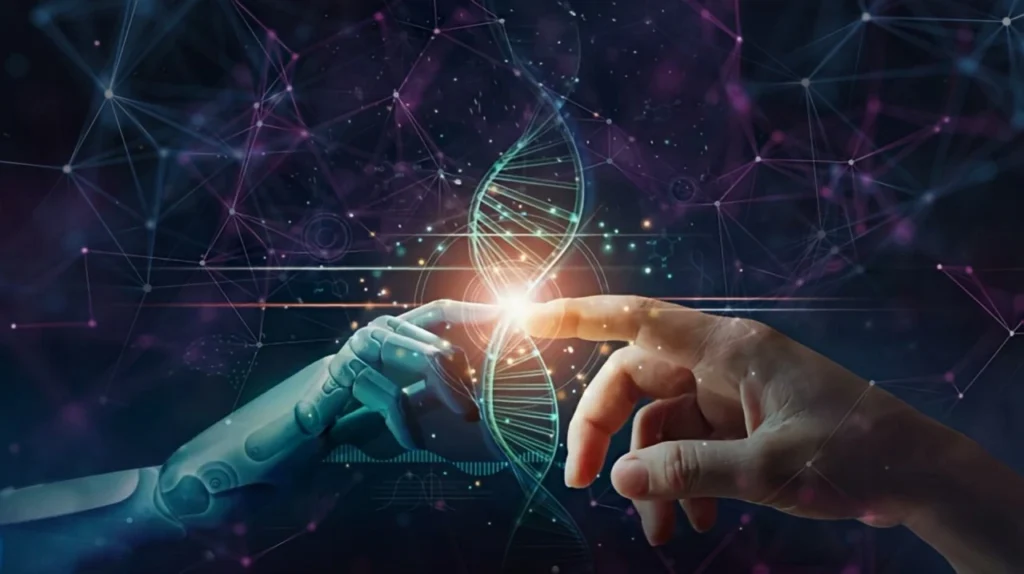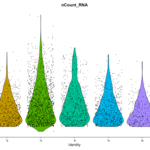Gene editing is transforming biotechnology and medicine. It offers the promise of correcting genetic diseases, creating new therapies, and even engineering organisms with desired traits. However, the complexity of the human genome, the vast amount of data involved, and the precision required make gene editing a challenging task. This is where Artificial Intelligence (AI) steps in. AI in biotechnology, particularly in gene editing, is reshaping the landscape by enhancing accuracy, efficiency, and innovation.
The Intersection of AI and Gene Editing
Gene editing, especially with tools like CRISPR-Cas9, has opened up possibilities that were once only imaginable. Scientists can now precisely alter DNA sequences, enabling the correction of genetic mutations or the enhancement of certain traits. But the challenge lies in predicting the outcomes of these edits, avoiding off-target effects, and understanding the broader implications of these changes. AI in biotechnology addresses these challenges by offering powerful algorithms that can analyze vast amounts of genetic data, predict outcomes, and optimize gene-editing techniques.

CRISPR-Cas9 and AI: A Perfect Partnership
CRISPR-Cas9 is one of the most widely used gene-editing tools today. It allows scientists to “cut” DNA at specific locations, enabling the removal, addition, or alteration of DNA sequences. However, despite its precision, CRISPR-Cas9 can sometimes cause off-target effects, where unintended parts of the genome are edited. This is where AI in biotechnology plays a crucial role.
AI algorithms are being developed to predict where CRISPR might cause off-target effects. For instance, MIT researchers created an AI tool called “DeepCRISPR,” which predicts off-target sites with high accuracy. By analyzing patterns in DNA sequences, DeepCRISPR can foresee potential off-target effects, allowing scientists to refine their approach and minimize errors.
Another breakthrough is Microsoft’s collaboration with the Broad Institute of MIT and Harvard. They developed an AI tool called “Azimuth” that helps scientists predict the efficiency of CRISPR edits. Azimuth uses machine learning to analyze past CRISPR experiments and predict which edits will be most successful. This partnership between AI and biotechnology is pushing the boundaries of what gene editing can achieve.
AI-Driven Gene Editing: Beyond CRISPR
While CRISPR is the most well-known gene-editing tool, other methods, such as base editing and prime editing, are gaining attention. AI in biotechnology is also making these techniques more effective.
Base Editing
Base editing is a more refined version of gene editing that allows scientists to change a single DNA base (A, T, C, or G) without cutting the DNA strand. This technique is useful for correcting point mutations, which are single base changes that cause diseases. AI algorithms are being developed to predict the best targets for base editing and to minimize unintended changes.
For example, researchers at Harvard have used AI to optimize base editing in treating genetic disorders like sickle cell anemia.
Prime Editing
Prime editing is a newer technique that can perform more complex edits, such as inserting or deleting DNA sequences. It’s more precise than CRISPR and can potentially correct up to 89% of known genetic mutations. AI in biotechnology is helping prime editing reach its full potential by analyzing the vast amount of data involved and predicting the most effective ways to apply this technology.
Real-World Applications: AI in Biotechnology for Gene Therapy
Gene therapy involves treating or preventing diseases by altering the genes inside a patient’s cells. AI in biotechnology is making gene therapy more efficient and personalized.
AI and CAR-T Therapy
Chimeric Antigen Receptor T-cell (CAR-T) therapy is a type of gene therapy used to treat certain cancers. It involves modifying a patient’s T-cells to attack cancer cells. AI is being used to optimize this process.
For example, researchers at the University of California, San Francisco (UCSF) developed an AI model that predicts the best genetic modifications for CAR-T cells, making the therapy more effective and reducing side effects.
AI in Gene Therapy for Rare Diseases
Rare genetic diseases often have limited treatment options. AI in biotechnology is helping to change that. For instance, the company “Deep Genomics” uses AI to analyze genetic data and identify potential therapies for rare diseases. Their AI-driven platform has already discovered new drug candidates for treating conditions like Batten disease and Wilson disease.
AI-Powered Drug Discovery
AI is also being used to discover new gene therapies. Companies like Insilico Medicine and BenevolentAI use AI to analyze genetic data and identify potential drug targets. These AI-driven approaches are speeding up the drug discovery process and making it possible to develop personalized gene therapies.
AI in Biotechnology: Ethical Considerations
While the potential of AI in gene editing is enormous, it also raises ethical questions. As AI in biotechnology continues to advance, it’s important to consider the implications of editing human genes.

Designer Babies and Genetic Enhancement
One of the most controversial topics is the potential use of gene editing to create “designer babies.” AI could theoretically be used to enhance traits like intelligence, strength, or appearance. This raises concerns about inequality, as only those who can afford these enhancements might benefit.
Gene Editing and Informed Consent
Another ethical concern is the issue of informed consent. AI in biotechnology is often used to analyze large datasets and predict the outcomes of gene editing. However, patients might not fully understand the implications of these predictions. Ensuring that patients are informed and consent to the use of AI in their treatment is crucial.
Privacy and Data Security
AI in gene editing relies on vast amounts of genetic data. This raises concerns about data privacy and security. Ensuring that genetic data is stored securely and used ethically is essential to maintaining public trust in AI-driven biotechnology.
Latest Research and Developments
AI in biotechnology is a rapidly evolving field, with new research and developments emerging regularly. Here are some of the latest advancements in AI-driven gene editing:
The Roslin Institute
Researchers at The Roslin Institute, known for cloning Dolly the sheep, are using AI to improve gene-editing techniques in livestock. They aim to create animals that are more resistant to diseases, reducing the need for antibiotics in farming.
The Allen Institute for AI
The Allen Institute for AI, in collaboration with the University of Washington, developed an AI tool called “Geneformer.” This tool uses natural language processing (NLP) to analyze scientific literature and identify potential gene-editing targets. Geneformer can read thousands of research papers in minutes, providing insights that might be missed by human researchers.
CRISPR Therapeutics and AI
CRISPR Therapeutics, one of the leading companies in gene editing, is using AI to improve their therapies. They have partnered with AI-driven companies like IBM to enhance the precision and efficiency of their gene-editing tools.
AI in Biotechnology Startups
Several startups are emerging at the intersection of AI and gene editing. For example, “Mammoth Biosciences,” co-founded by CRISPR pioneer Jennifer Doudna, is using AI to develop next-generation gene-editing tools. Another startup, “Synthego,” uses AI to optimize CRISPR guides, making gene editing more accessible and reliable.
AI in Biotechnology: The Future of Gene Editing
The future of gene editing lies in the continued integration of AI in biotechnology. As AI algorithms become more sophisticated, they will enable even more precise and efficient gene-editing techniques. This will open up new possibilities in medicine, agriculture, and beyond.

Personalized Gene Editing
One of the most exciting prospects is personalized gene editing. AI will enable scientists to tailor gene-editing treatments to individual patients, considering their unique genetic makeup and medical history. This could lead to more effective treatments with fewer side effects.
AI-Driven Gene Editing for Disease Prevention
In the future, AI in biotechnology could be used to predict and prevent genetic diseases before they occur. By analyzing genetic data from newborns, AI could identify potential risks and recommend preventive gene-editing treatments.
Ethical AI in Gene Editing
As AI-driven gene editing becomes more widespread, ethical considerations will become increasingly important. Ensuring that AI is used responsibly and ethically in biotechnology will be crucial to realizing its full potential.
Conclusion
AI in biotechnology is transforming gene editing from a cutting-edge technology into a practical tool for treating and preventing diseases. By enhancing the precision, efficiency, and accessibility of gene editing, AI is opening up new possibilities in medicine, agriculture, and beyond. However, as with any powerful technology, it’s important to use AI-driven gene editing responsibly, considering the ethical implications and ensuring that the benefits are accessible to all.
The integration of AI in biotechnology is just beginning, and the future holds even more exciting developments. As researchers, companies, and institutions continue to explore the potential of AI in gene editing, we can expect to see new therapies, techniques, and innovations that will shape the future of biotechnology and medicine.



